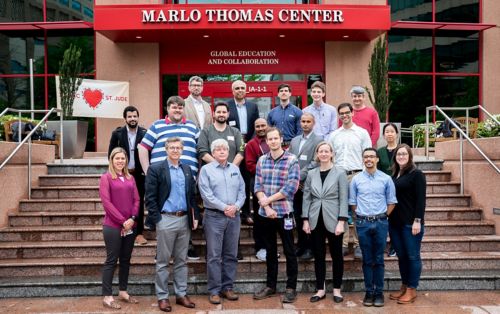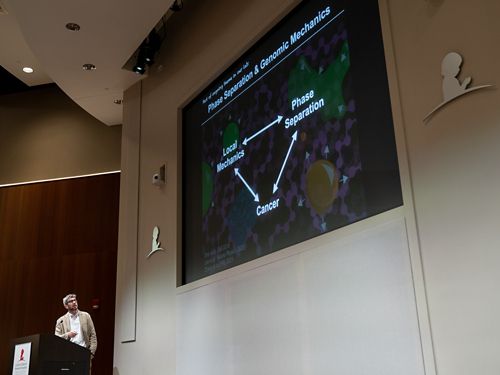St. Jude Family of Websites
Explore our cutting edge research, world-class patient care, career opportunities and more.
St. Jude Children's Research Hospital Home

- Fundraising
St. Jude Family of Websites
Explore our cutting edge research, world-class patient care, career opportunities and more.
St. Jude Children's Research Hospital Home

- Fundraising
About the collaborative
St. Jude established the Collaborative Research Consortium on the Biology and Biophysics of RNP Granules in 2017 to increase our understanding of biomolecular condensate formation. Biomolecular condensates, such as ribonucleoprotein (RNP) granules, are membraneless organelles that regulate the localization of molecular components to drive biochemical reactions and regulate biological processes. Phase transitions and percolation — the act of molecules forming noncovalent cross-links and assembling into a system-spanning network — drive condensate formation, but many unanswered questions remain. Since disruptions in condensate formation can cause neurodegeneration and cancers, a better understanding of this process will directly impact human health. The consortium focused on elucidating the mechanisms governing biomolecular condensate formation, their function and how they are impacted by disease-causing mutations. Within the first five years, investigators developed new methodologies and made several integral discoveries, resulting in 73 publications in high-impact journals.

Pursuing these objectives required consortium members to develop numerous new methodologies, ranging from novel optogenetic techniques to new statistical approaches. Work by the consortium described the physics of associative polymers and the phase transitions of low-complexity domains; research also examined full-length proteins and systems with protein and RNA. These newly developed methods helped establish and apply the stickers-and-spacers model, which explains and predicts protein phase separation. A focus on stress granule formation uncovered the “network-encoded percolation model” for phase transitions and the importance of G3BP1/2 in these transitions. Homo- and heterotypic interactions were shown to drive the behavior of phase transitions, and these interactions were able to be quantified. The consortium also elucidated the structural and dynamic organization of protein and RNA molecules inside condensates and discovered the properties and importance of condensate interfaces. Furthermore, using cell-free extracts to reconstitute condensates facilitated new opportunities to explore condensates’ physicochemical and molecular properties. Their work also indicated that dynamical arrest modulates condensate functions and disease processes.

Lastly, researchers focused on several nuclear functions including the role of condensates in fusion oncoprotein pathophysiology and how the nucleolus functions via a flux-based molecular handoff model.
This Collaborative was renewed in 2022, and proposed projects will explore the structure and dynamics of condensates and how they relate to biological functions and pathology-associated dysfunction. The collaborators have already made several discoveries. Nascent condensates were shown to be viscoelastic fluids that transition to viscoelastic solids with time, and the timing is dependent on the physicochemical attributes of stickers and spacers. Work has also shown that disrupted transport can lead to disease. Furthermore, they made progress in understanding assembly mechanisms in live cells, the difference between phase separation and soluble complexes in biological processes and the dynamical arrest of RNA condensates. The data produced by the consortium has shifted the view of biomolecular condensates from that of simple liquids to networked viscoelastic fluids forming via phase separation and percolation of associative polymers.

Collaborative members
Lead – Tanja Mittag, PhD, St. Jude Children’s Research Hospital
Priya Banerjee, PhD, The University at Buffalo
Cliff Brangwynne, PhD, Princeton University
Richard Kriwacki, PhD, St. Jude Children’s Research Hospital
Rohit Pappu, PhD, Washington University in St. Louis
J. Paul Taylor, MD, PhD, EVP, Scientific Director, St. Jude Children’s Research Hospital